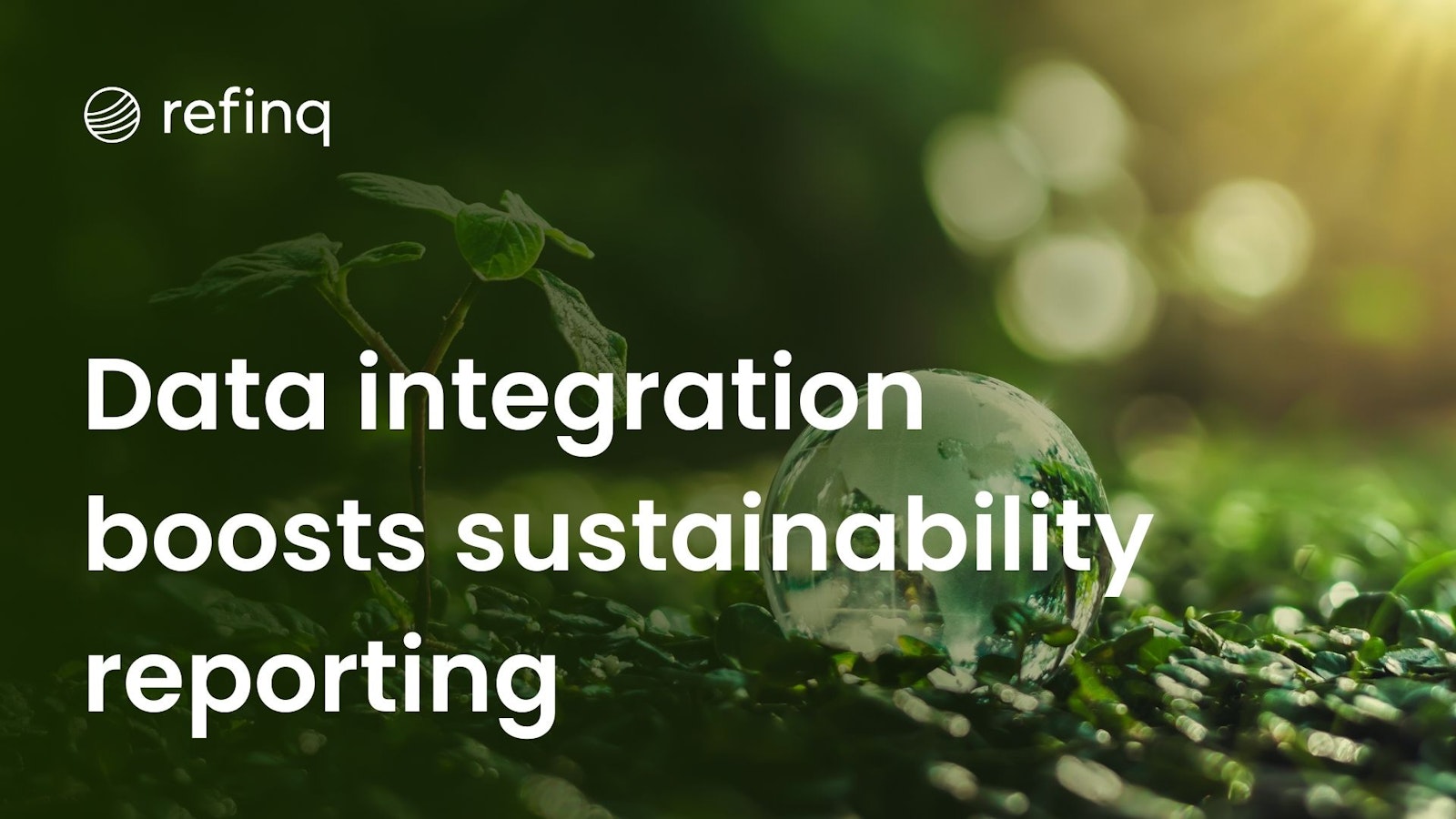

In recent years, the demand for greater sustainability in business practices has risen significantly. As companies are increasingly held accountable for their environmental impact, the integration of data-driven frameworks like the Corporate Sustainability Reporting Directive (CSRD) and the European Sustainability Reporting Standards (ESRS) has become a pivotal factor in achieving corporate sustainability. These frameworks are designed to enhance transparency in sustainability reporting, helping companies not only meet regulatory compliance but also make informed decisions that foster long-term environmental and financial benefits.
The integration of data-driven insights into sustainability reporting allows businesses to better assess, monitor, and mitigate their environmental impact. refinq plays a significant role in this integration by providing real-time data analysis and risk forecasting. By utilizing advanced technologies like machine learning and geospatial analysis, refinq offers valuable insights that enable companies to manage their environmental risks effectively, ensuring compliance with both CSRD and ESRS requirements.
The Corporate Sustainability Reporting Directive (CSRD) and the European Sustainability Reporting Standards (ESRS) are two critical regulatory frameworks aimed at standardizing sustainability reporting across the European Union. These frameworks require businesses to disclose more detailed and accurate information about their environmental, social, and governance (ESG) practices, particularly focusing on climate impact, biodiversity, and resource management.
The CSRD is a set of rules that builds on the existing Non-Financial Reporting Directive (NFRD). It significantly expands the scope of reporting requirements, making sustainability disclosures more robust and comparable. Starting in 2025, the CSRD will require all large public-interest companies to disclose detailed information on their sustainability efforts. The directive emphasizes the importance of transparency, aiming to provide stakeholders with clear, standardized data to assess the sustainability practices of corporations.
refinq aligns perfectly with the CSRD framework by enabling businesses to assess their environmental risks with precision. Through the integration of risk models and real-time data processing, companies can ensure their sustainability reports meet CSRD's stringent standards.
The ESRS complements the CSRD by offering detailed reporting standards for specific sustainability aspects. ESRS covers areas like climate change, biodiversity, water resources, and supply chain management, requiring companies to disclose both qualitative and quantitative information about their sustainability practices. The ESRS framework is designed to ensure that businesses provide transparent, reliable data that can be compared across sectors and industries.
The integration of refinq allows companies to generate data-driven reports that align with ESRS requirements, ensuring accurate, actionable insights that help businesses stay on track with their sustainability goals.
One of the primary benefits of integrating data-driven insights into sustainability reporting is that it allows companies to move beyond basic compliance to truly understanding and mitigating their environmental impact. By using advanced data analytics, businesses can create a more accurate picture of their sustainability practices, forecast potential risks, and identify opportunities for improvement.
Big data, including information from environmental monitoring systems, satellite imagery, and climate models, enables businesses to gather valuable insights into their sustainability performance. By analyzing large volumes of environmental data, companies can gain a deeper understanding of their carbon footprint, resource consumption, and the impact of their operations on biodiversity.
With tools like refinq, companies can process vast datasets to assess their environmental impact, develop strategies to reduce emissions, and optimize resource use. This data-driven approach is essential for meeting the demands of both CSRD and ESRS, ensuring that businesses provide accurate, evidence-based sustainability reports.
Data-driven tools also help companies forecast future environmental risks based on a range of scenarios. By using machine learning and geospatial analysis, companies can model how their operations might be affected by changing environmental conditions, such as climate change or resource scarcity. This predictive capability allows businesses to implement proactive strategies to address these risks before they become significant issues.
For example, refinq offers forecasting tools that enable businesses to assess climate-related risks, including extreme weather events, flooding, and water stress. These tools provide a critical advantage for companies seeking to mitigate their exposure to environmental risks and ensure compliance with the CSRD and ESRS.
The integration of CSRD and ESRS with data-driven tools enables businesses to provide more transparent and verifiable sustainability reports. By relying on real-time data and analytics, companies can produce more accurate reports that demonstrate their commitment to sustainability.
refinq allows businesses to create detailed, data-backed reports that provide transparency into their environmental impact. This level of accountability is increasingly important for investors, regulators, and consumers, who demand more visibility into how companies are addressing environmental challenges.
Data-driven insights also enable better decision-making by providing businesses with the information they need to assess and manage environmental risks effectively. By using predictive models and risk assessments, companies can make informed decisions about resource allocation, supply chain management, and long-term sustainability strategies.
The integration of refinq's tools helps businesses identify areas where they can reduce environmental risks and improve sustainability performance. These insights are essential for navigating the complexities of the CSRD and ESRS frameworks, allowing companies to stay ahead of regulatory demands.
Meeting the reporting requirements of the CSRD and ESRS can be a complex and time-consuming process. However, by integrating data-driven insights into sustainability reporting, companies can streamline compliance and reduce the administrative burden.
refinq simplifies the process by providing businesses with the tools they need to collect, analyze, and report environmental data in line with CSRD and ESRS standards. This not only ensures regulatory compliance but also frees up valuable resources that can be used to focus on more strategic sustainability initiatives.
Data-driven sustainability is essential for companies looking to meet the demands of the CSRD and ESRS frameworks while ensuring long-term environmental and financial success. By integrating advanced data analytics and risk assessment tools, businesses can improve transparency, make more informed decisions, and enhance their overall sustainability performance.
The role of refinq in this integration cannot be overstated. By providing real-time environmental data, predictive risk models, and actionable insights, refinq helps businesses comply with regulatory frameworks like the CSRD and ESRS, while driving sustainability efforts that are both efficient and effective.